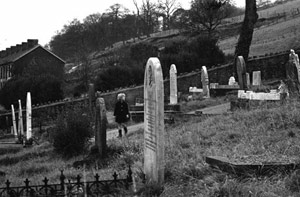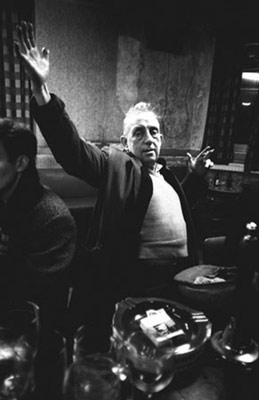 |
→ June 2005 Contents → Feature
|
Aberfan: The Days After
June 2005
|
|||||||||
|
It was on every news station that October morning. A mountain had fallen on a primary school in Aberfan, Wales. Scores of children were dead or missing, along with many of their teachers. It was Friday, October 21st, 1966. The children had gone off to school, many of them walking alone, for Aberfan was a safe community. A child could stroll from one end of the village to the other without fear of being swept away by criminals. They had waved goodbye to their mothers, while others, with book bags in hand, kissed their dad's fresh-shaven faces and hurried on to Moy Road to join their friends in the Pantglas Junior School.
One hundred and sixteen children were killed that day, along with twenty-eight adults. Rescuers were on the scene in minutes. A county road repair crew was working just a few streets away. They heard the awful roar from beyond the fog-cloaked hills, then witnessed the cascading landslide crash against and over the school and the nearby private homes.
They raced to the scene and in the first few minutes managed to rescue several of the schoolchildren. The awful cries from beneath the hellish debris anguished the workers as they dug furiously, some with bare hands. More help arrived. Men raced up Moy Road from the Mackintosh Pub; others, on night shifts and still sleepy-eyed, sprang from their beds and were sloshing through the muck in their slippers. Police and firefighters, laborers, shop assistants, mothers, brothers, schoolmates
The crisis whistle blew at the nearby Methyr Vale colliery. Citizens, oblivious to the catastrophe at the school, thought there had been a mine disaster and ran to the wrong location. Miners down in the pit were brought to the surface, a one-mile lift ride, and with their tools in their hands, hurried to the school. Hundreds of men and women were tearing at the mud to get down to the half-buried classrooms but for many of the children, it was already too late.
The miners, familiar with digging, worked efficiently: taking charge, forming 'gangs,' tunneling into areas where they believed air pockets may have formed and children might have survived. Other rescuers were digging madly into the muck with no plan in mind and at times injuring themselves or others nearby with unfamiliar tools. Soon the diggers uncovered the small bodies of their loved ones.
In New York I watched news report after news report from Aberfan with my four-month-old son lying nearby, and was deeply affected by the tragedy. I had an overwhelming desire to photograph that Welsh mining village—after the first horde of journalists had finally given up the story of the disaster—to photograph the life that ensued.
I arrived in Aberfan on October 29th, 1966, eight days later. The village was hostile ground: sad, angry, wet and cold, half of it still covered in grime from the tip's fallen slurry. I took up residence above the Macintosh Pub in an unheated third-floor garret with two small windows that looked immediately upon the site of the tragedy. I didn't know any of the villagers but I was about meet most of them, and to document their shock and grief and the stirrings of life after so much loss. I left Aberfan on Christmas Day 1966, never to forget the events I witnessed, the faces of the decent people I studied, their stories, and their sorrows.
© I.C. Rapoport
|
|||||||||
Back to June 2005 Contents
|
|


